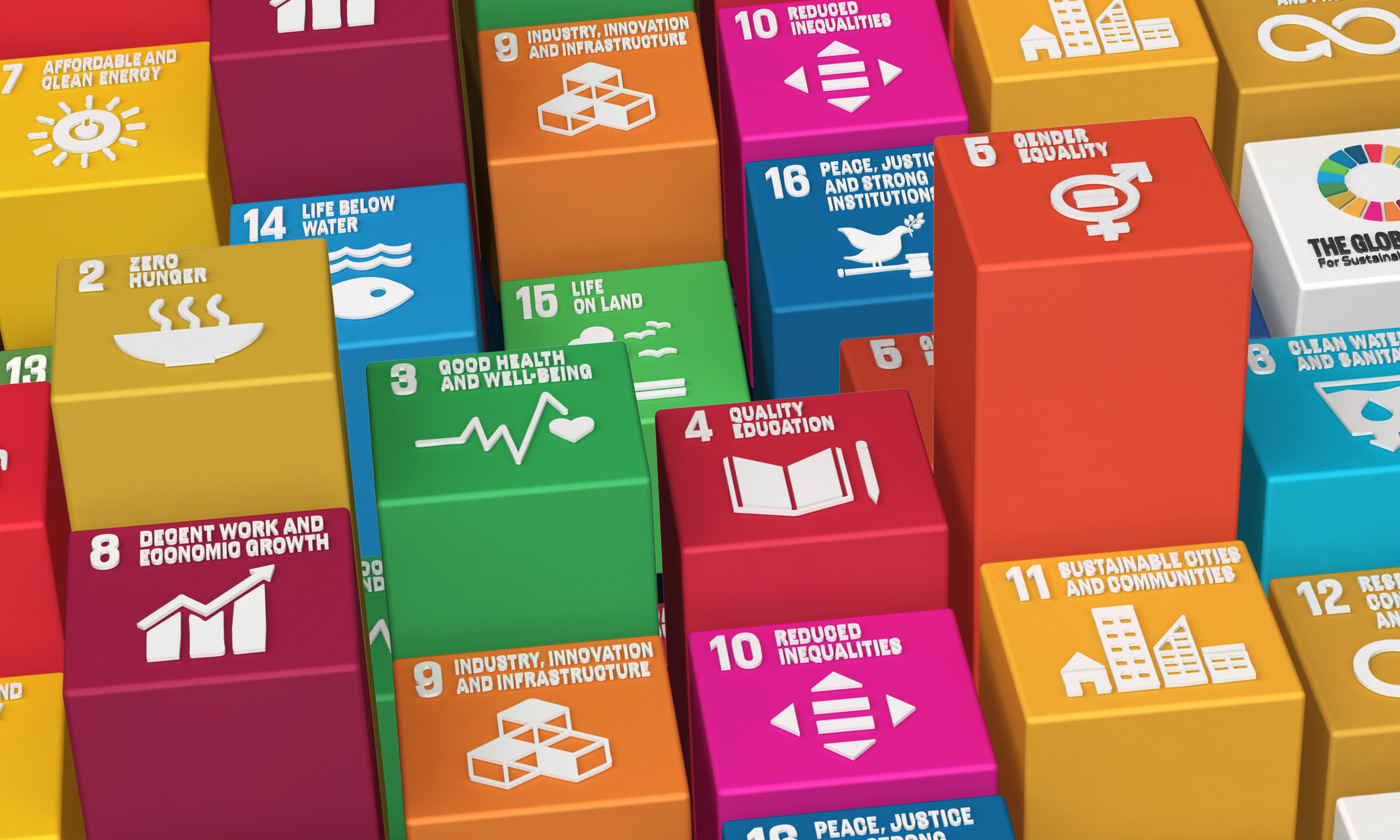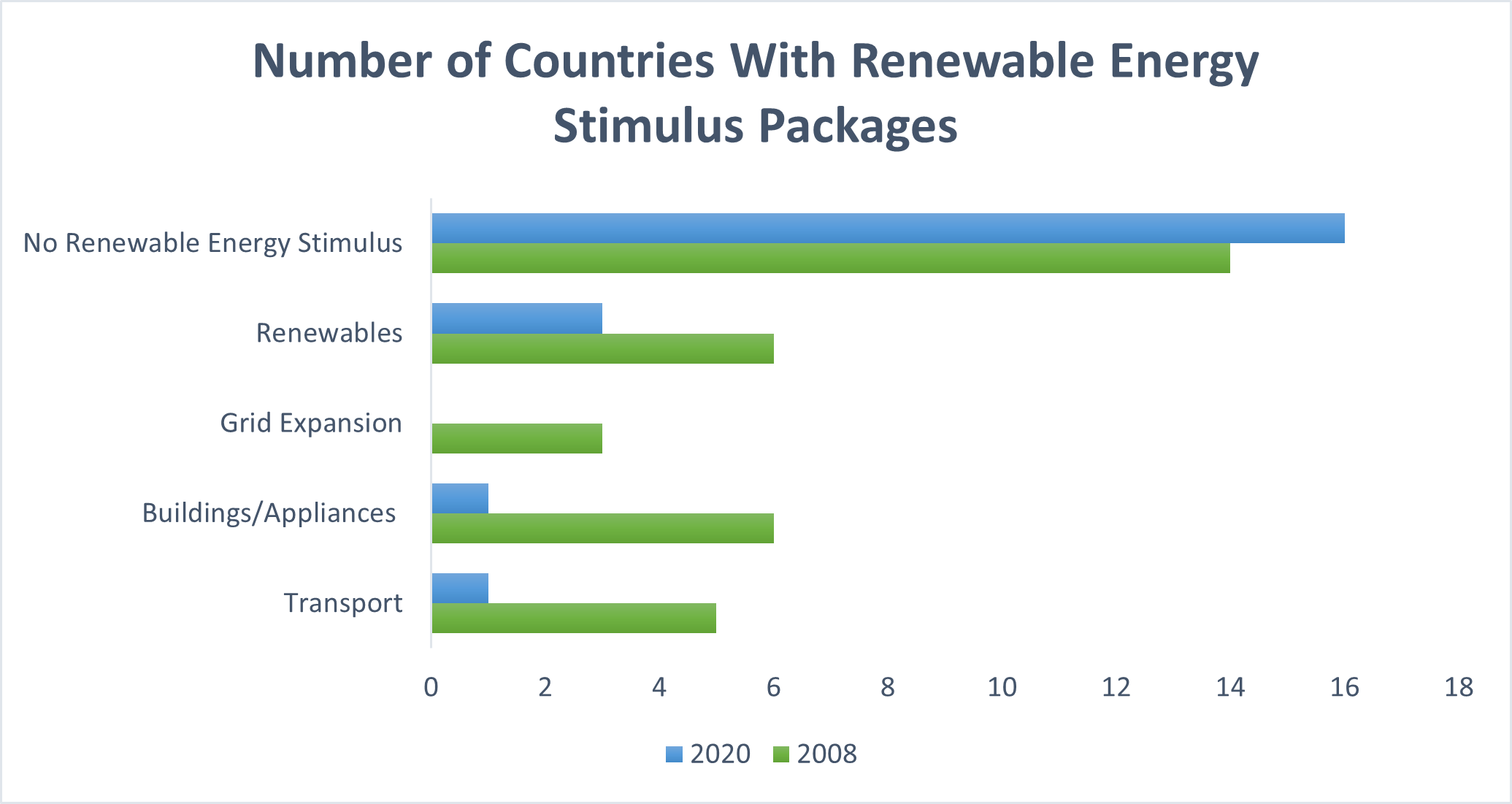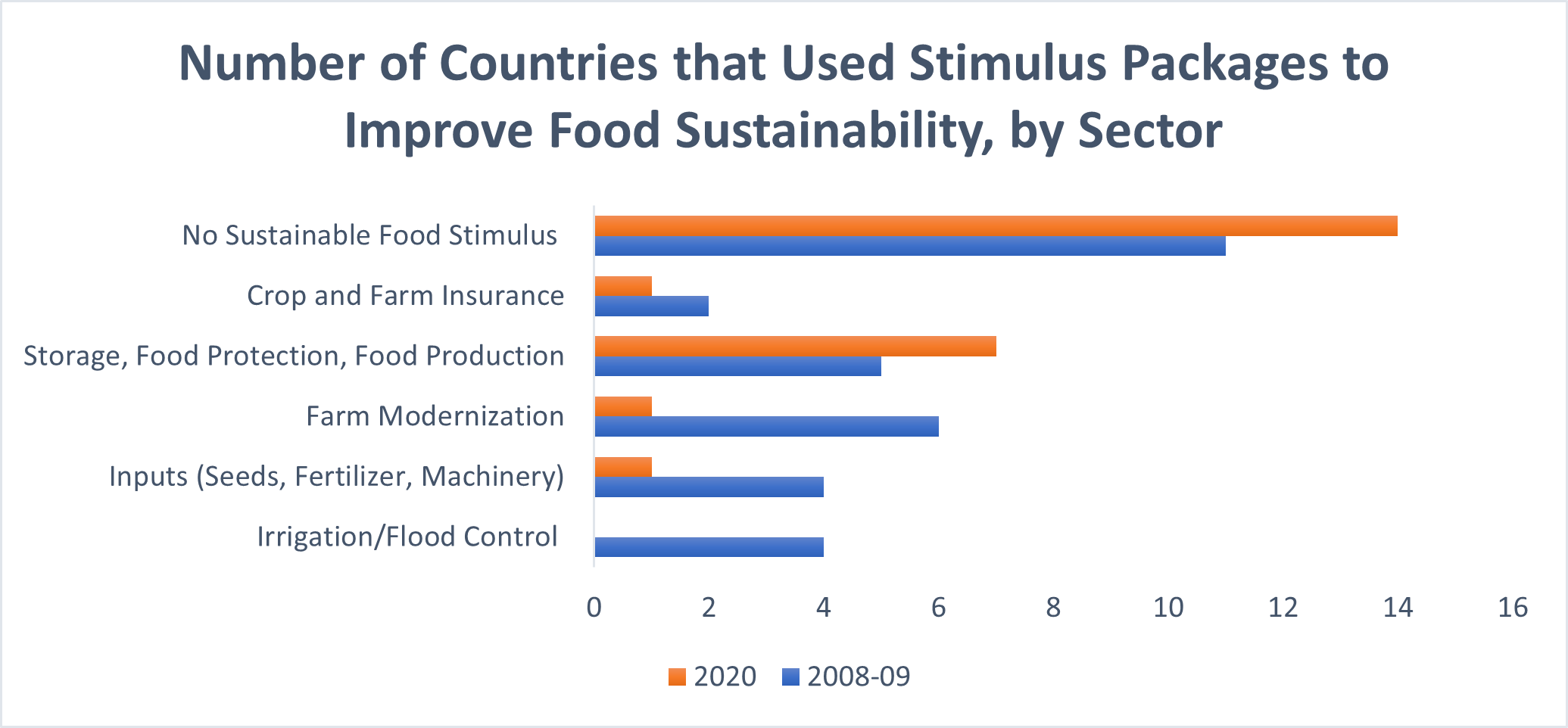By Chantal Line Carpentier, Drew D'Alelio, Bruno Cardoso Zuccolo, Olivier Combe and Raymond Landveld.

Facing another global crisis, governments are spending trillions to revive their economies amid growing calls from different corners to channel these funds to the underfinanced Sustainable Development Goals (SDGs).[1]
Recently UNCTAD took a deep dive into responses to two separate but comparable crises: the 2008/09 financial crisis and the coronavirus pandemic.
The response to each were compared using a sample of 20 countries[2] and the European Union to assess whether governments stimulus packages increased support toward structural economic reform to achieve:
- SDG7 (affordable and clean energy),
- SDG2 (zero hunger, improved food security and sustainable agriculture), and
- SDG5 (gender equality and women’s empowerment).
The study found that stimulus packages in 2020 are much larger but less channeled towards these key SDGs, which affect basic human needs and underpin societies’ ability to achieve sustainable development.
This lack of alignment, if continued, will be a missed opportunity to retire an economic model that marginalizes billions of people and advances the well-being of some at the expense of the rest and the planet.
Who has the bigger stimulus?
Compared to 2008, developed countries spent 270 times more, while developing countries spent 18 times more to recover from COVID-19, a much deeper crisis.
But some developing countries are facing major fiscal space constraints, including potential debt default, falling remittances and revenues from international trade in goods and services, especially tourism, and foreign direct investment contraction, in 2020, a situation that is likely to continue into 2021.
Table 1: 2020 Stimulus Packages Are Larger in Total and as a Share of GDP Compared to 2008
|
Average of 2008-2009 Stimulus package in % of GDP |
Average of 2020 Stimulus package in % of GDP |
Change in % |
|
|
Developed |
2.63 |
9.73 |
270 |
|
Developing |
4.62 |
5.46 |
18 |
|
HIC |
7.65 |
8.40 |
10 |
|
UMIC |
6.04 |
6.42 |
6 |
|
LMIC |
2.50 |
3.76 |
50 |
|
LIC |
2.00 |
3.30 |
65 |
|
Transition economies |
13.20 |
3.40 |
-74 |
A turn to green growth?
When the financial crisis struck in 2008, South Korea, Canada and China implemented bold policies to accelerate renewable energy transitions, while others in the sample lacked resources or political will.
Fast forward to 2020 and few countries supported renewable energy as a key investment area, instead of doubling down on fossil fuel support. That said this report covers immediate responses focusing on job and business protection.
And things seem to be changing, for instance, the European Commission recently announced its Green Deal targeting funding for more than 1,000 projects in renewable energy, energy storage, building upgrading, low-carbon transport and green manufacturing.
Figure 1: 2020 Stimulus Packages must support a Global Green New Deal

An insufficient focus on food security and agriculture
Although prevalent in both crises, more countries in our sample supported food security and sustainable agriculture in their stimulus packages in 2008-2009 versus 2020.
In 2020, as the crisis grinded economic activity to a halt, measures to produce and secure access to food became urgent. However, the impact on food security was mostly from the demand side as people losing their income could not afford food.[3]
Figure 2: Number of Countries that Used Stimulus Packages to Improve Food Sustainability, by Sector

Both crises failed to tackle gender inequality in stimulus packages
Despite strong public commitment to SDG 5, we found few countries using stimuli to advance gender equality and women’s economic empowerment in response to either crisis. An exception is Canada’s new funding aiming to double the number of women-owned businesses by 2025.
This is especially concerning given the disproportionate effect of the COVID-19 crisis on women and girls, who are more vulnerable to lose jobs, education and economic opportunities during crises. Targeting gender inequalities and actively promoting opportunities for women during this crisis is needed, such as investing in the care economy, to avoid widening gender gaps and erasing decades of progress[4].
Small and medium businesses not forgotten
On the upside, micro, small and medium enterprises (MSMEs) have received more attention in this crisis. Packages have focused on providing jobs and recognizing the importance of these firms as the backbone of most countries’ economies.
The nature of the COVID-19 crisis and the resulting lockdowns disproportionately affected smaller firms, which depend more on face-to-face business and likely have less access to large savings and/or alternative credit sources to smooth over their costs. MSMEs also bore the biggest brunt of the 2008 global financial crisis with consequences still felt today but were not the target of programs.
Recovering better starts aligning stimulus with the 2030 Agenda
The response to the devastating COVID-19 pandemic shows that governments are capable of large spending and investments when facing extraordinary circumstances: 12 of the 21 stimulus packages we examined exceeded 4% of the concerned nations’ GDP.
This shows it is not too late to change course and do what is necessary to put people and the planet first. The SDGs provide a blueprint for translating the clear popular support and expert consensus on the severity of these problems into action.
The SDGs also form a roadmap to utilize the rare opportunity the pandemic provide to access financing and to reform business and financing models underpinned by investment and trade treaties. The trillions invested now will affect our trajectory in the coming decades.
We cannot afford to not use them to better prepare for the next crisis and accelerate the transition towards decarbonized, sustainable and equitable economies that deliver on the SDGs.
The views expressed in this document are those of the authors and do not necessarily reflect the views of the United Nations Secretariat.
[1] Chantal Line Carpentier, Olivier Combe, and Raymond Landveld are from the UNCTAD New York office of the Secretary-General. Drew and Bruno were remote interns with the office during the summer of 2020. Both are pursuing MBA in the Yale School of Management and an MA at the Jackson Institute for Global Affairs.
[2] The 20 countries are: Argentina, Australia, Bangladesh, Canada, China, Costa Rica, Ecuador, India, Jamaica, Kenya, Mexico, Russia, Rwanda, Saudi Arabia, Senegal, South Africa, South Korea, Vietnam, Zambia
[3] UNCTAD 2020. Impact of the COVID-19 pandemic on Trade and Development: Transitioning to a new normal.
[4] Impact of the COVID-19 Pandemic on Trade and Development



